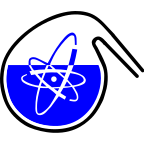Speaker
Description
This study was aimed to development and application of polymer composite formulations for “dry” decontamination of the spent nuclear fuel storage of mobile NPP “PAMIR” with gas-cooled nuclear reactor using heat carrier N
Polymer composite formulations for “dry” decontamination and their operation characteristics (decontamination efficiency, consumption rate), and at evaluating the chemical resistance and radionuclide fixation strength in the “dry” decontamination waste obtained using the new decontaminating pastes were developed. Polymer composite formulations for decontamination were developed on the basis of a polyvinyl alcohol solution as a binder with active additives (HNO
The current work directions deal with implementation of decontaminating gels on decommissioning of the spent nuclear fuel storage pools, spacing grids of storage pools and further release of decommissioning material and waste from regulatory control.
Total square of decontaminated equipment was 62,4 m
The developed formulations ensure reliable, efficient, and safe storage of radioactive waste from “dry” decontamination of the external surfaces of the equipment and premises with the new formulations.

